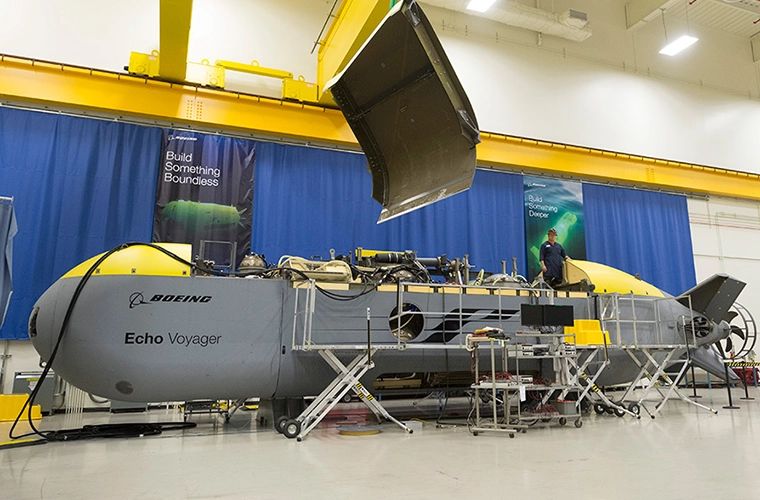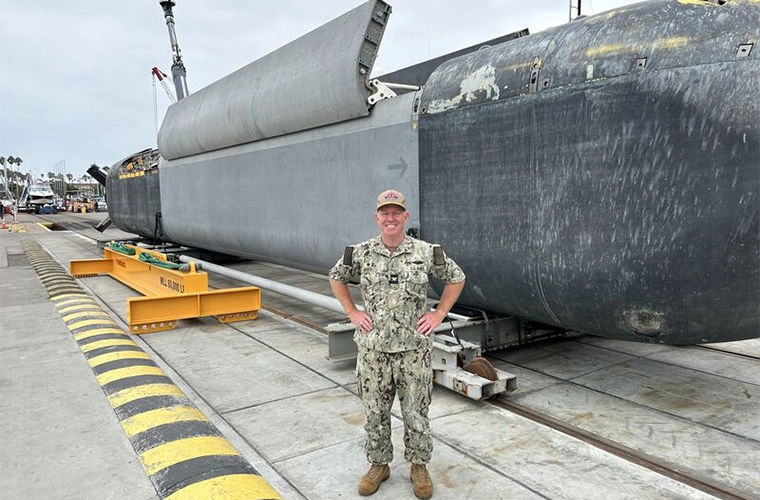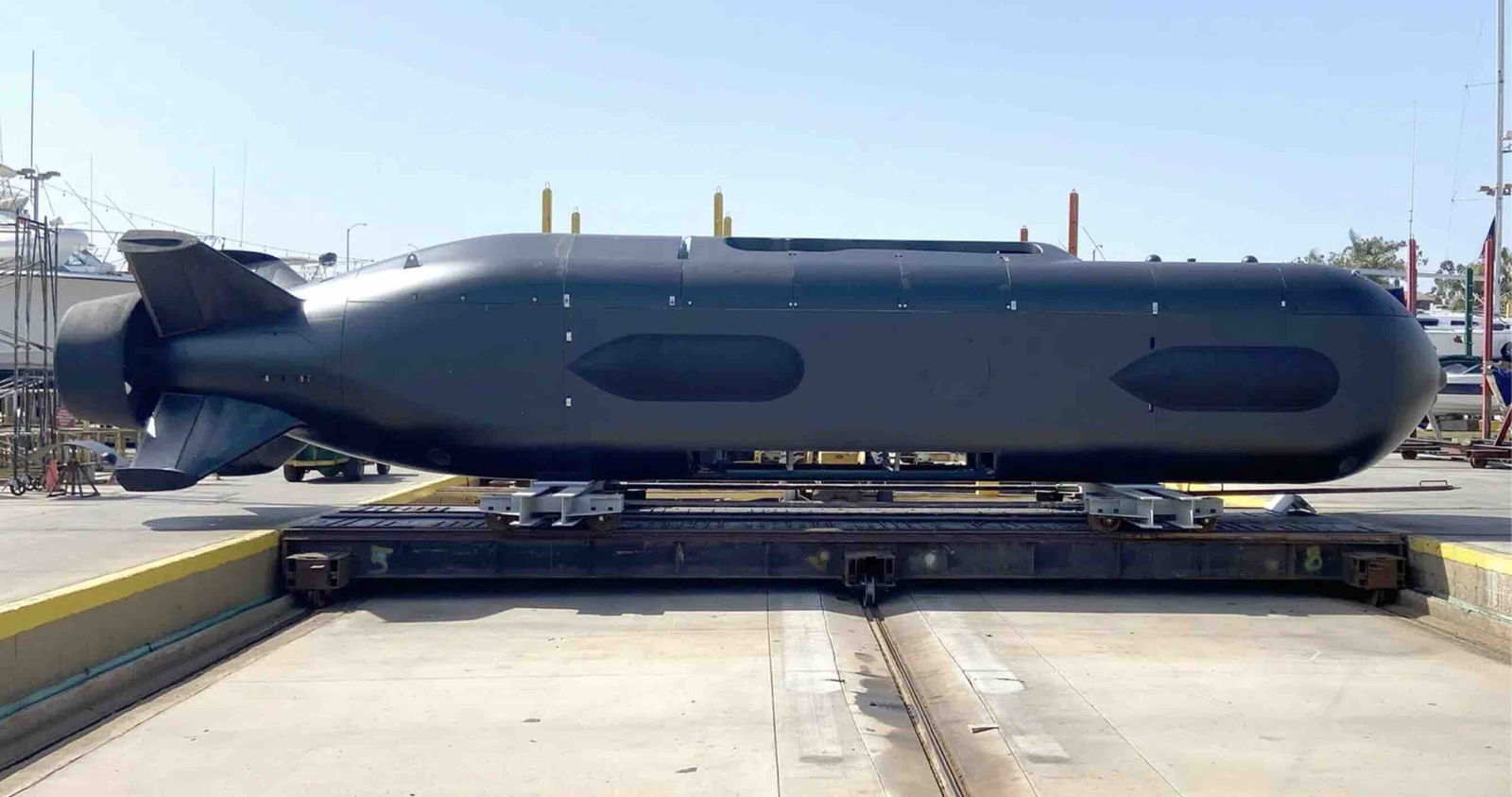New photos reveal the impressive size and potential of Boeing’s Orca XLUUV, the U.S. Navy’s new autonomous extra-large uncrewed undersea vehicle, which could revolutionize underwater warfare.
The U.S. Navy took a significant step forward in late December 2023, with Boeing delivering the first of six Orca XLUUVs, massive autonomous underwater drones designed to redefine naval warfare.
Now, new photos shared on LinkedIn by Captain Jason Weed, the former Commodore of the Navy’s Unmanned Undersea Vehicles Squadron ONE (UUVRON-1), offer the first glimpse of the Orca’s modular payload section.
This unique open-architecture hull insert gives the Orca XLUUV the unprecedented ability to adapt and carry a wide range of mission-specific payloads, potentially transforming underwater operations.
“The Orca XLUUV is a cutting-edge, autonomous, unmanned diesel-electric submarine with a modular payload section to execute a variety of missions critical to enhancing the Navy’s undersea prowess,” Naval Sea Systems Command (NAVSEA) said in a press release.
“Configured to accommodate various payloads, the Orca XLUUV allows for the seamless integration of sensors, communication systems, and other mission-specific components, adapting to the evolving requirements of naval operations.”


(Image Source: Boeing)
The Orca XLUUV is derived from Boeing’s Echo Voyager autonomous underwater vehicle, which was unveiled in 2016 and tested in 2017. The uncrewed underwater vehicle (UUV) uses a hybrid rechargeable power system, allowing it to operate independently for months and with a range of up to 6,000 nautical miles.
The Orca XLUUV is designed to be “host ship independent,” allowing the autonomous UUV to be launched and recovered without a dedicated support ship. This affords the Orca great operational flexibility, enabling it to maintain a persistent presence in challenging undersea environments.
One of the most striking aspects of the Orca XLUUV is its sheer size. The UUV measures nearly 51 feet long with an 8.5-foot beam without its payload module. However, the sub is designed to incorporate a modular payload hull insert of up to 34 feet, extending the sub to a length of up to 85 feet.
By comparison, a fully equipped Orca XLUUV measures nearly 15% as large as the U.S. Navy’s Ohio class nuclear-powered submarine, making it the largest publicly known UUV in the world.
The recent photos shared by Capt. Weed highlights the Orca’s true game-changing potential in its unique modular payload bay.


Incorporating an open architecture design, the Orca XLUUV can carry various payload hull inserts, including sensor intelligence-gathering platforms, communication systems, torpedoes, or even potentially ballistic missiles.
This adaptability will allow the Orca XLUUV to fulfill numerous roles, ranging from mine countermeasures and anti-submarine warfare to electronic warfare and strike missions.
The flexibility and scalability of the Orca XLUUV’s design means it can be configured to meet evolving naval requirements, making it a critical asset for future maritime operations.
The development of the Orca XLUUV is part of a broader trend in modern naval warfare strategy that increasingly emphasizes using unmanned systems.
UUVs provide several advantages over traditional crewed vessels, including reduced risk to personnel and the ability to operate in environments inaccessible or too dangerous for human crews.
Underwater autonomous drones, like the Orca XLUUV, are particularly valuable because they can conduct extended missions without direct human intervention. This endurance is crucial for maintaining surveillance, reconnaissance, and combat operations in remote or hostile regions.
Additionally, using autonomous vehicles reduces the logistical footprint and operational costs of deploying human-crewed submarines.


The U.S. has been investing heavily in developing and deploying underwater drones, recognizing their potential to reshape the future of naval warfare.
The establishment of specialized units like the Unmanned Undersea Vehicles Squadron One (UUVRON-1) demonstrates the Navy’s commitment to integrating these unmanned platforms into its operations. Established in 2017 and elevated to a major command in 2022, UUVRON-1 oversees the deployment and testing of various uncrewed undersea vehicles.
In July 2023, the Navy further enhanced its capabilities by creating the Unmanned Undersea Vehicle Flotilla Three (UUVFLOT-3) to support the Orca’s operational testing, evaluation, follow-on fielding, and employment.
Following the delivery of the first Orca XLUUV in December 2023, the Navy has commenced a rigorous testing program to validate its performance and refine its operational use.
Risk-reduction testing off the coast of Southern California began in March 2024, with insights gained from these trials expected to inform the construction and deployment of the remaining five units.
Looking ahead, the Navy plans to expand its fleet of autonomous UUVs. The Department of Defense’s (DoD) long-term vision includes developing the infrastructure necessary for forward-deployed operations and ensuring that these advanced unmanned systems can be rapidly integrated into combat scenarios.
With its unmatched endurance, modular design, and diverse mission capabilities, the Orca XLUUV is poised to play a critical role in shaping the future of the U.S.’s naval defense strategy.
“It is even more impressive out of the water,” Capt. Weed described the Orca XLUUV in his post on LinkedIn. “The size and payload flexibility of this vehicle will change the options available to Commanders and allow the U.S. Navy to continue pressing our advantage in the undersea domain.”
Tim McMillan is a retired law enforcement executive, investigative reporter and co-founder of The Debrief. His writing typically focuses on defense, national security, the Intelligence Community and topics related to psychology. You can follow Tim on Twitter: @LtTimMcMillan. Tim can be reached by email: tim@thedebrief.org or through encrypted email: LtTimMcMillan@protonmail.com

